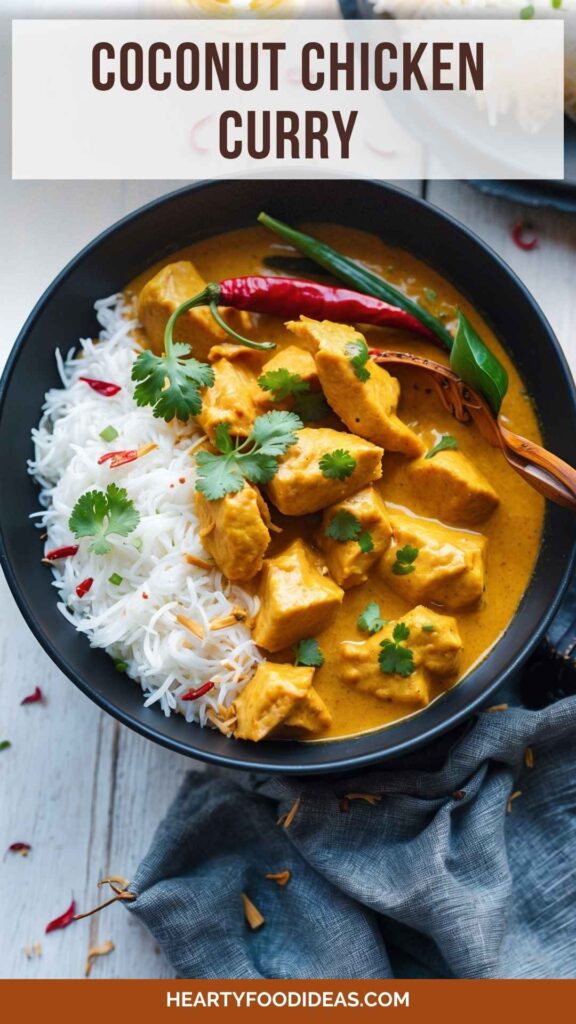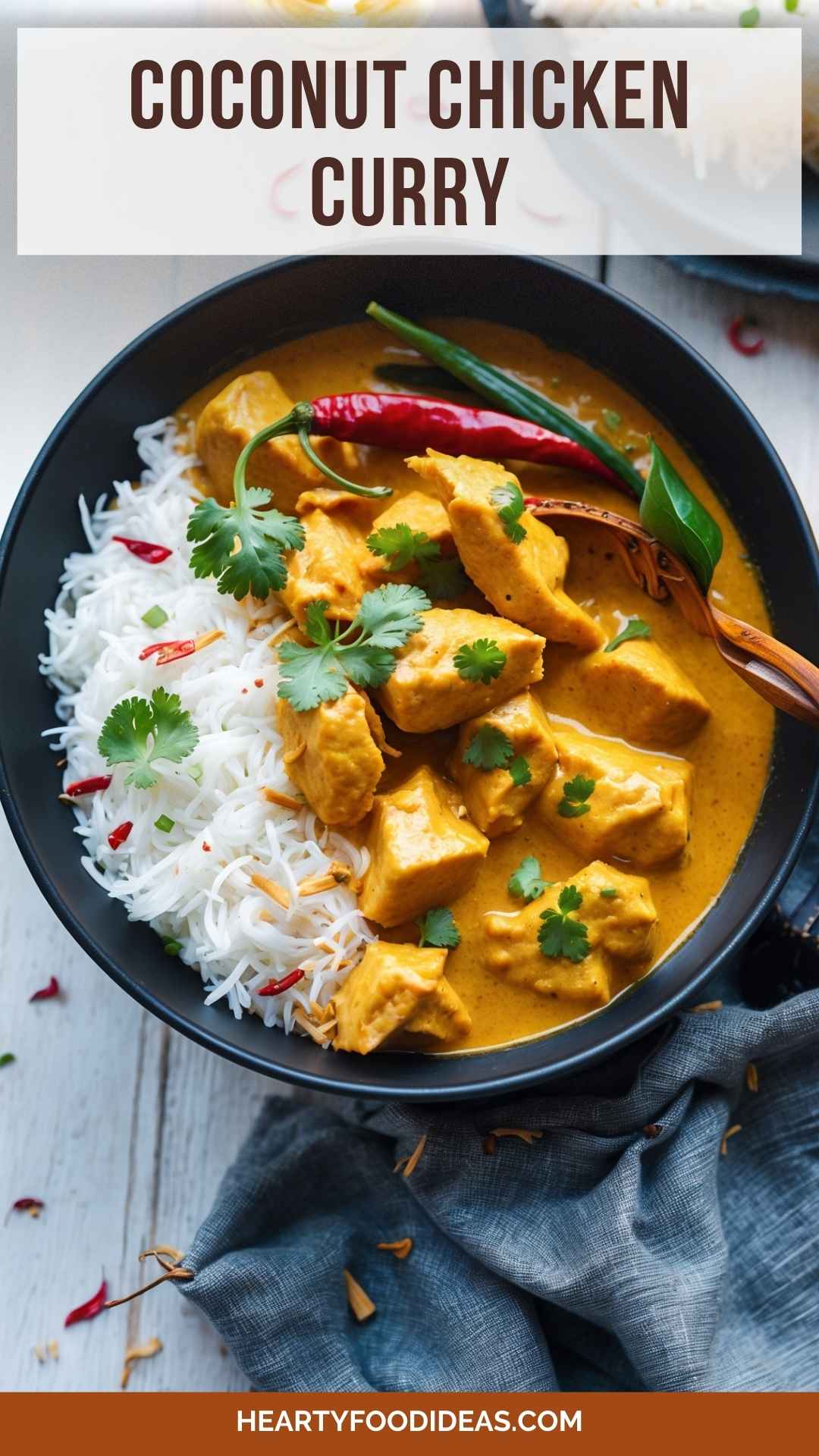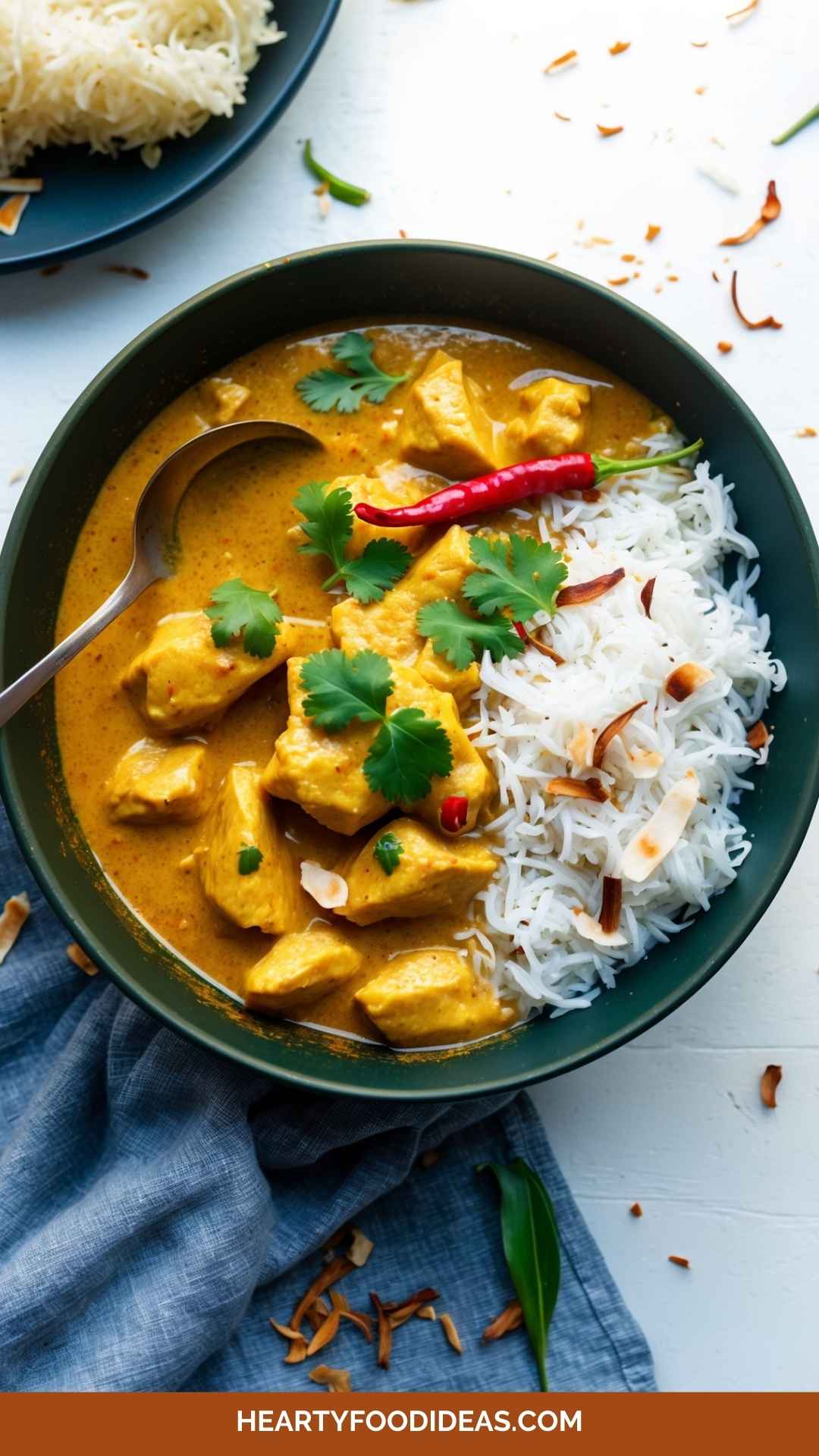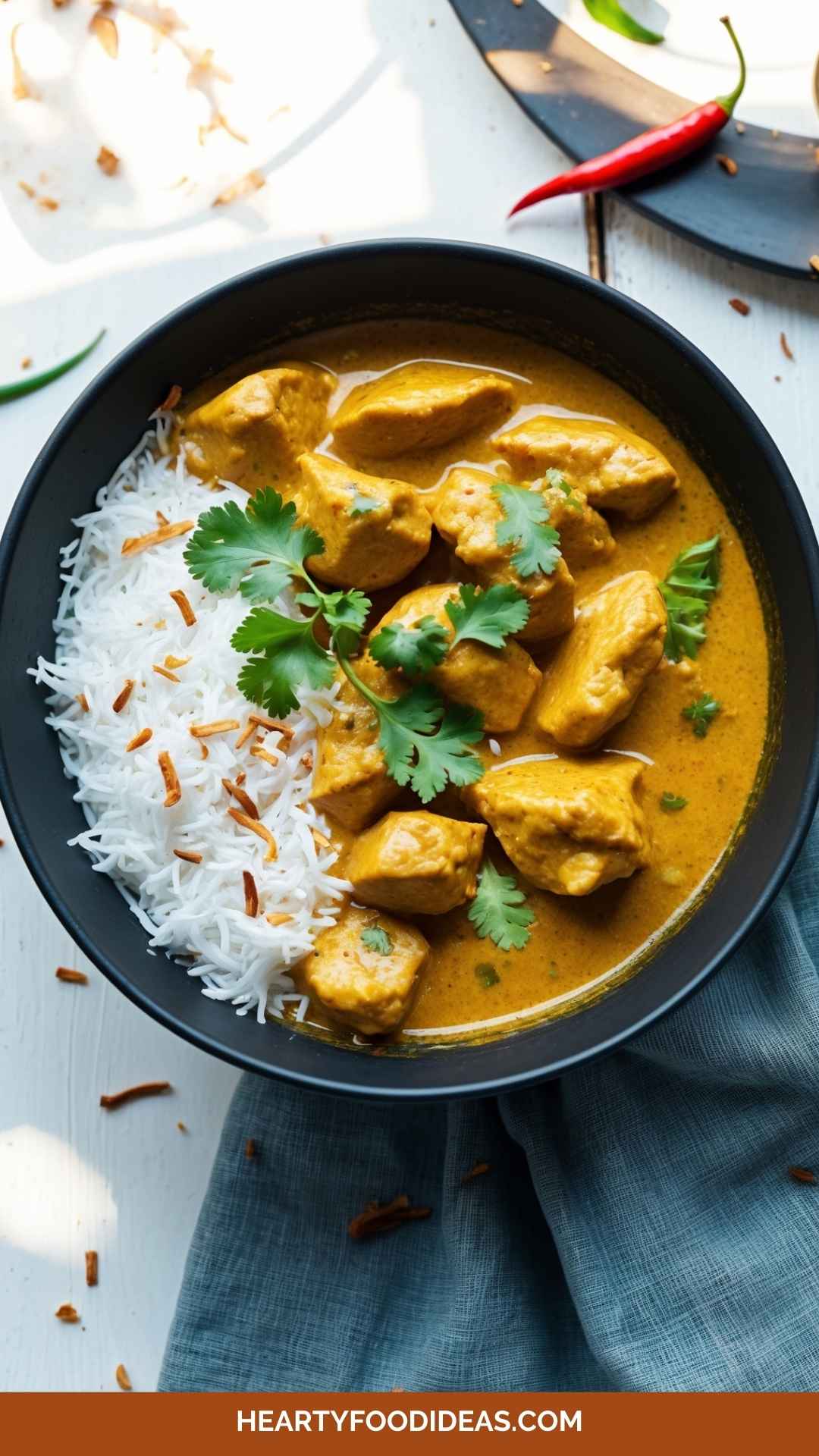When diving into the world of coconut chicken curry, pairing it with the right sides can elevate the entire meal. The creamy, spicy, and aromatic profile of the curry calls for fresh and complementary flavors that balance its richness. Steamed jasmine rice is a classic option, as its fluffy texture absorbs the flavorful sauce, making each bite a delight.
Another excellent choice is naan bread, soft and warm, which is perfect for scooping up the curry. The slight chewiness of the bread complements the creamy texture of the curry beautifully.
For a refreshing contrast, a cucumber salad with lime juice, salt, and a bit of chili adds a cool crunch to balance the spiciness of the dish.
To round out the meal, consider adding some roasted vegetables like zucchini, carrots, or bell peppers. Their caramelized sweetness provides a delightful contrast to the savory curry, while also offering an extra boost of nutrients. These sides work harmoniously to make the meal even more enjoyable.
What is Coconut Chicken Curry?
At its core, coconut chicken curry is a dish made from chicken, coconut milk, and a variety of spices. The richness of coconut milk serves as a base, while spices like turmeric and red curry paste bring in heat and depth.
Although the main ingredients can vary by region, the essence remains the same—comfort food that warms the soul.
What Does It Taste Like?
Coconut chicken curry offers a delightful melding of flavors. The sweetness of coconut pairs beautifully with the spiciness of the curry paste, creating a balance that’s pleasing to the senses.
Aromatics like ginger and garlic weave through the dish, adding layers of taste. Each bite introduces a new experience—sometimes a foreground of spice, at other times a gentle coconut embrace. It’s the type of meal that can transport you to tropical beaches with just one taste.
Why This Recipe Works
As you embark on making coconut chicken curry, understanding why this recipe works will set you up for success. Here are a few compelling reasons:
- Flavor Depth: The combination of spices, including turmeric and red curry paste, adds complexity. Each ingredient has its role, layering flavors that elevate the dish.
- Creamy Texture: Full-fat coconut milk provides a creaminess that’s rich and satisfying. It coats the chicken beautifully while balancing spice.
- Ease of Preparation: This dish is straightforward to prepare. With just a few steps, you can enjoy a fantastic meal that seems gourmet.
- Versatility: This recipe allows for substitutions and variations, making it adaptable. Whether you have leftover vegetables or different proteins, it can be made your way.
Ingredients for Coconut Chicken Curry
Now, let’s gather our arsenal of ingredients:
- 1 pound boneless, skinless chicken breast or thighs, chopped into 1-inch pieces
- 3 tablespoons coconut oil, divided
- 1/2 medium yellow onion, chopped (about 1/2 cup)
- 3 garlic cloves, minced (about 1 1/2 teaspoons)
- 2 tablespoons freshly grated ginger (from a 1 1/2-inch piece)
- 2 teaspoons turmeric powder
- 3 tablespoons red curry paste
- 2 teaspoons ground cumin
- 1 large red bell pepper, sliced
- Salt and freshly ground black pepper, to taste
- 1 can full-fat coconut milk (not light)
- Juice of 1 lime
- 1 to 2 tablespoons brown sugar
- 2 teaspoons fish sauce
- 1 tablespoon soy sauce
- 1/4 cup fresh cilantro and/or basil, chopped
- Chopped peanuts or cashews, for garnish
Step by Step Instructions
Step 1: Prepare the Chicken
Start by chopping your chicken into bite-sized pieces. This not only speeds up the cooking process but also makes for easy eating. Season the chicken with salt and pepper.
Step 2: Sauté Aromatics
Heat 2 tablespoons of coconut oil in a large skillet or pot over medium heat. Add the chopped onion and sauté until it becomes translucent. This should take about 3–5 minutes. Then, stir in minced garlic and grated ginger. Sauté for another minute until fragrant.
Step 3: Add Spices
Next, add the turmeric powder, red curry paste, and ground cumin to the skillet. Stir this mixture for about 1–2 minutes. You want to let the spices bloom, allowing their flavors to intensify.
Step 4: Cook the Chicken
Once the spices are fragrant, add the chicken pieces to the skillet. Stir frequently until the chicken is lightly browned on all sides. This should take roughly 5–7 minutes—don’t worry; it doesn’t need to be fully cooked through at this stage.
Step 5: Incorporate Coconut Milk
Pour in the can of full-fat coconut milk, scraping the bottom of the skillet to deglaze any flavorful bits. The mixture will start bubbling as the coconut milk heats up, creating a luscious sauce.
Step 6: Add Veggies
Toss in the sliced red bell pepper and let everything simmer. Cover the skillet and reduce the heat to medium-low. Allow it to simmer for 10–15 minutes or until the chicken is thoroughly cooked and the vegetables are tender.
Step 7: Finish with Acidity and Sweetness
Once the chicken is cooked, stir in lime juice, brown sugar, fish sauce, and soy sauce. Adjust the seasoning with additional salt or sugar as needed. This will balance the flavors beautifully.
Step 8: Garnish and Serve
Finally, remove the skillet from heat. Stir in your chopped cilantro or basil. If you enjoy a bit of crunch, sprinkle the chopped peanuts or cashews on top. Serve with steamed jasmine rice or warm naan for a fulfilling meal.
Notes
To ensure the best coconut chicken curry experience, here are some handy tips:
- Use Fresh Ingredients: Fresh garlic and ginger will provide more flavor than powdered forms.
- Adjust Spice Levels: If you're sensitive to heat, start with a small amount of red curry paste and taste as you go.
- Opt for Full-Fat Coconut Milk: Avoid light coconut milk for a richer, creamier curry.
- Don’t Skip the Browning: Browning your chicken develops flavor. Aim for a nice sear on each piece.
- Store Leftovers Properly: If you have any leftovers, let them cool before storing in an airtight container in the fridge.
How to Store the Leftovers?
Leftovers? No problem! Here’s how to store them properly:
- Refrigeration: Allow the curry to cool completely, then transfer it to an airtight container. It can be stored in the fridge for up to 3 days.
- Freezing: For longer storage, place in a freezer-safe container. It can last up to 2–3 months. To reheat, simply thaw in the refrigerator overnight and warm on the stove or in the microwave.
Sides for Coconut Chicken Curry
While the curry is the star, sides can enhance the meal experience. Here are a few options to consider:
- Jasmine Rice: The light, fragrant nature of jasmine rice absorbs curry perfectly, making it a natural partner for this dish.
- Quinoa: For a nutritious twist, serve with quinoa. It adds protein and texture.
- Cabbage Slaw: A colorful slaw with a lime vinaigrette can add a refreshing crunch. Toss together shredded cabbage, carrots, and scallions.
- Mango Chutney: A touch of mango chutney can add a sweet note that pairs wonderfully with the spices in the curry.
Alternative Choices to Ingredients
Sometimes, you might not have all the specific ingredients on hand. Here are some alternatives:
- Chicken: If you’re out of chicken breast or thighs, feel free to use shrimp or tofu for a fantastic substitution.
- Coconut Oil: In a pinch, olive oil or any vegetable oil can replace coconut oil without affecting the curry too much.
- Red Curry Paste: Green curry paste can work as a substitute if that's what you have. Just be mindful of the spice level.
- Fish Sauce: A couple of drops of soy sauce can substitute fish sauce if you're looking for a vegetarian option.
Conclusion
Coconut chicken curry is a delightful dish that marries flavors and textures in a magical way. Its versatility opens doors for creativity in the kitchen. Whether you indulge in it over rice, with naan, or dressed up with vibrant sides, this dish has something for everyone.
My journey with coconut chicken curry continues, and I can't wait for you to experience its charm. Trust me, once you’ve had your first taste, you might just find yourself falling in love with it too.
Enjoy the cooking adventure!
You’ll also like the following recipes!





